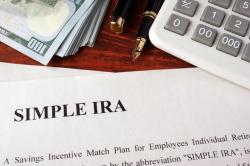How to begin withdrawing money from retirement funds?
Starting retirement fund withdrawals is an important financial step, and it's essential to do it correctly to maximize your financial security during retirement. The specific process for withdrawing money from your retirement funds can vary depending on the type of retirement accounts you have, your age, and your financial goals. Here's a step-by-step guide to help you begin withdrawing money from your retirement funds:
Step 1: Determine Your Retirement Account Type
Identify the type of retirement accounts you have. The most common types include:
401(k) or 403(b): These are employer-sponsored retirement accounts. You can typically start withdrawing from them after you reach age 59½.
Traditional IRA: You can start withdrawing without penalty after age 59½.
Roth IRA: You can start withdrawing your contributions at any time without penalties, but earnings are subject to rules to avoid taxes and penalties.
Pension Plans: If you have a pension plan, check the rules for when you can start receiving pension benefits.
Social Security: You can start receiving Social Security benefits as early as age 62, but waiting until your full retirement age (usually 66-67) can result in higher monthly benefits.
Step 2: Understand Withdrawal Rules and Taxation
Different retirement accounts have varying rules and tax implications for withdrawals. For instance:
Traditional 401(k) and Traditional IRA withdrawals are generally subject to income tax. If you withdraw before age 59½, you may also face a 10% early withdrawal penalty (with some exceptions).
Roth IRA withdrawals of contributions are tax-free and penalty-free at any time. Earnings can be withdrawn tax-free after age 59½, provided you meet certain criteria.
Social Security benefits may be partially taxable depending on your total income.
Pension plans may have specific rules regarding distribution options and taxation.
Understanding these rules is crucial to minimize taxes and penalties.
Step 3: Plan Your Retirement Income Strategy
Before making withdrawals, create a retirement income plan. Consider factors such as your expected lifespan, anticipated expenses, healthcare costs, and inflation. Decide how much you need to withdraw annually to maintain your desired lifestyle.
Step 4: Choose a Withdrawal Strategy
Common withdrawal strategies include:
Systematic Withdrawals: Establish a regular withdrawal schedule, such as monthly or annually, based on your income needs.
Required Minimum Distributions (RMDs): After age 72 (for most retirement accounts), you must take RMDs from traditional retirement accounts. The IRS provides tables to determine the minimum distribution amount each year.
Variable Withdrawals: Adjust your withdrawals based on your financial needs and investment performance. This approach provides flexibility but requires careful monitoring.
Income Annuity: Consider purchasing an immediate annuity that provides regular income payments for life.
Bucket Strategy: Allocate your investments into different "buckets" with varying time horizons. You draw from different buckets based on your income needs.
Step 5: Begin Withdrawals
Once you've chosen a strategy, initiate your withdrawals following the rules of your retirement accounts. You may need to contact your retirement account custodian or administrator to request distributions.
Step 6: Monitor and Adjust
Regularly review your retirement income plan and adjust your withdrawals as needed based on your financial situation and goals. Keep track of tax implications and make changes to optimize your tax efficiency.
Step 7: Seek Professional Advice
Consider consulting a financial advisor or tax professional for personalized guidance on your retirement withdrawals. They can help you make informed decisions that align with your specific financial situation and goals.
Remember that retirement withdrawals are a critical aspect of your financial plan, and careful planning can help ensure your financial security throughout your retirement years.
Initiating Retirement Funds Withdrawal: A Step-by-Step Guide
- Contact your retirement plan administrator. This is the company or financial institution that manages your retirement account. You can find their contact information on your retirement plan statement or on their website.
- Request a withdrawal form. The withdrawal form will ask for information such as your account number, the amount you want to withdraw, and how you want to receive the funds.
- Complete the withdrawal form and return it to your plan administrator. You can usually mail, fax, or scan and email the form.
- Once your plan administrator has received and processed your withdrawal request, you will receive the funds. The time it takes to process a withdrawal request can vary depending on your plan administrator and the type of withdrawal.
Transitioning to Retirement: Starting the Withdrawal Process
When you are transitioning to retirement, it is important to start thinking about how you will withdraw funds from your retirement accounts. There are a few things to keep in mind:
- Your age. If you are under age 59½, you may have to pay a 10% early withdrawal penalty on any funds you withdraw from your retirement accounts.
- Your income needs. How much money will you need each month to cover your living expenses? This will help you to determine how much money to withdraw from your retirement accounts.
- Your risk tolerance. How much risk are you comfortable with? If you are more risk-averse, you may want to withdraw less money each month.
- Your tax liability. Taxes will be due on any money you withdraw from your retirement accounts. Keep this in mind when determining how much money to withdraw.
It is a good idea to speak with a financial advisor to develop a retirement withdrawal plan that is tailored to your individual needs.
Managing Your Retirement Income: Withdrawing Funds Wisely
Once you have started withdrawing funds from your retirement accounts, it is important to manage your income wisely. Here are a few tips:
- Create a budget. This will help you to track your income and expenses.
- Pay down debt. This will reduce your monthly expenses and free up more money for other things.
- Invest your money wisely. This will help your money to grow over time.
- Review your budget and investment strategy regularly. This will help you to stay on track and make adjustments as needed.
It is also important to have a contingency plan in case of unexpected events, such as a medical emergency or a job loss. You may want to consider keeping some of your retirement savings in a liquid account, such as a savings account or money market account. This will give you access to cash if you need it.
Retirement can be a wonderful time of life. By planning carefully and managing your income wisely, you can enjoy your retirement years to the fullest.












